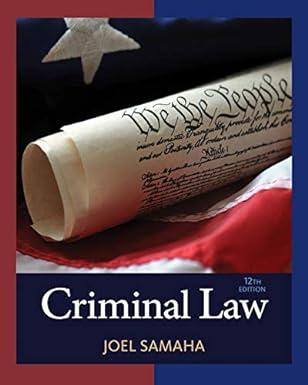Omer Ninham (Defendant) was convicted of first-degree intentional homicide and was sentenced to life in prison without
Question:
Omer Ninham (Defendant) was convicted of first-degree intentional homicide and was sentenced to life in prison without possibility of parole. Ninham filed a motion for relief from his life sentence, seeking to allow for the possibility of parole. The Circuit Court denied the motion. Ninham appealed. The Supreme Court affirmed.
Facts
On September 24, 1998, around dusk, 13-year-old Vang was bicycling home along Webster Avenue in Green Bay, Wisconsin. Vang’s older brother had sent Vang to the grocery store for tomatoes. Vang was returning home on his bicycle, carrying a plastic grocery bag filled with tomatoes, when he was approached by five juveniles: 14-year-old Ninham, 13-year-old Richard Crapeau (Crapeau), 13-yearold Jeffrey P., 14-year-old Amanda G., and 14-yearold Christin J......
1. Summarize the majority’s four reasons for deciding that Omer Ninham’s sentence to life in prison without possibility of parole is not cruel and unusual punishment.
2. Summarize the dissent’s reason for arguing that “death in prison” for a juvenile is cruel and unusual punishment.
3. The U.S. Supreme Court has agreed to hear the case in 2012. In your opinion, how should SCOTUS rule? Defend your answer.
Step by Step Answer:






